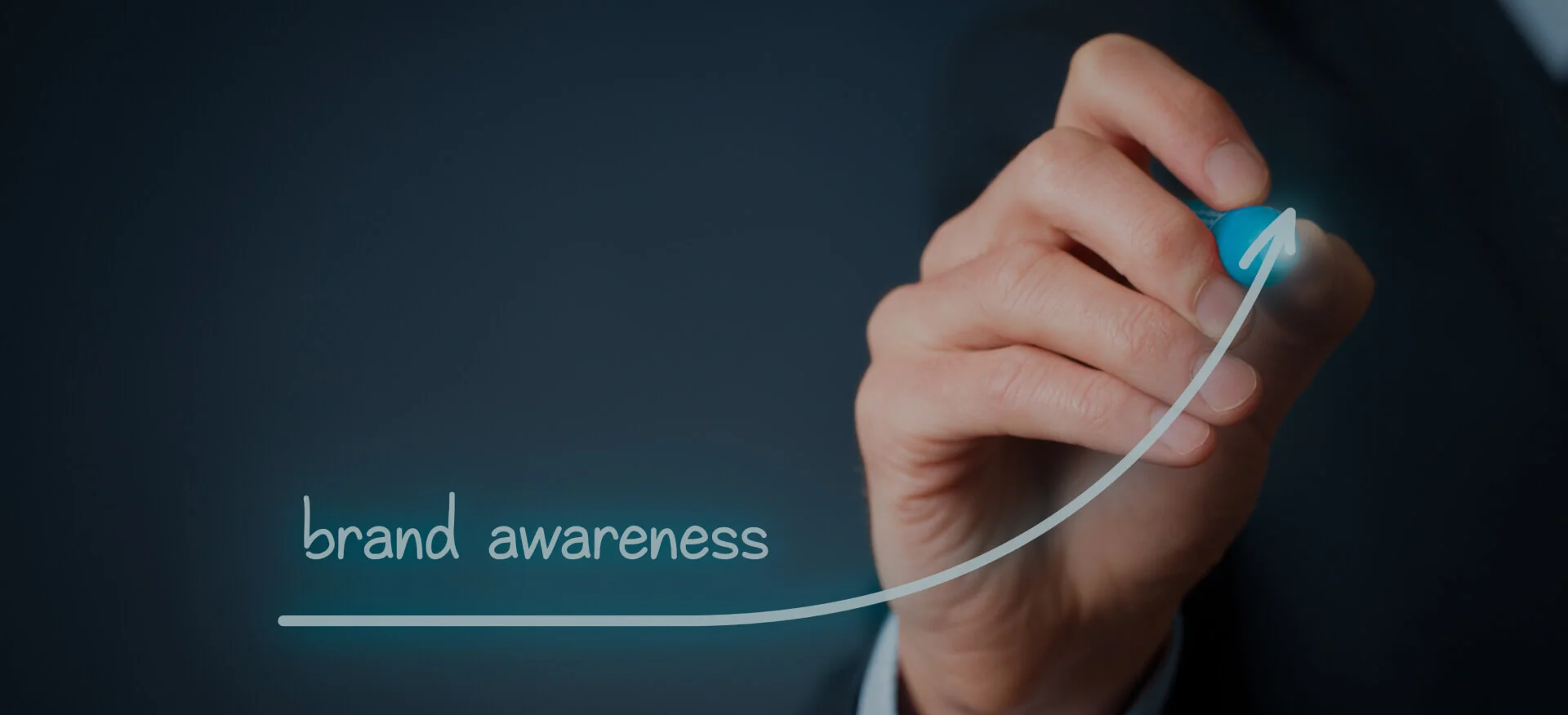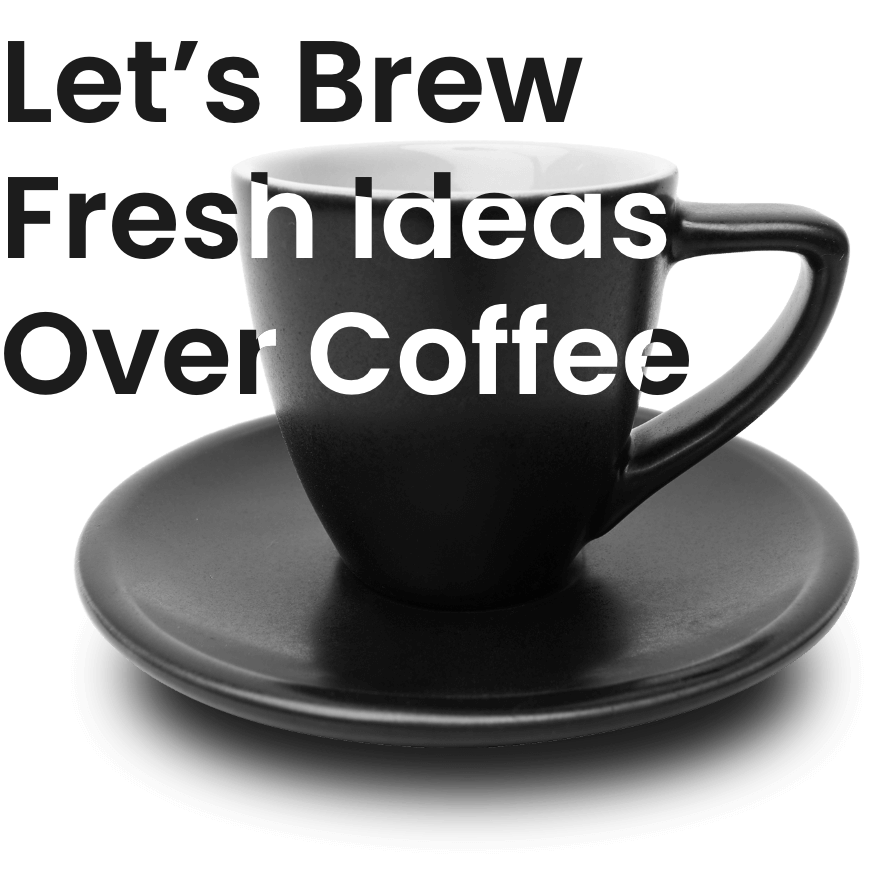Brand awareness is the heartbeat of any strong marketing strategy.
It’s all about how easily your target audience recognizes and remembers your brand, and that recognition is what fuels trust, loyalty, and buying decisions.
Whether you’re rolling out a new product, going through a rebrand, or breaking into a new market, knowing how visible your brand really is can make or break your results.
The tricky part? How to measure brand awareness isn’t something you can just pull from a spreadsheet.
How do you tell if people genuinely remember your brand, or if you’re just one name lost in the crowd? And how do you measure recognition versus real recall?
In this guide, we’ll walk through practical, easy-to-use methods for measuring brand awareness, combining numbers with real-world feedback.
You’ll discover the key brand awareness metrics, tools, and strategies to understand how people see your brand, and how approaches like best seo agency for ecommerce can strengthen visibility while sharpening your overall marketing game.
Whether you’re using advanced measuring brand awareness tools or conducting manual research, these insights will help you make data-driven marketing decisions.
What is Brand Awareness?
Brand awareness is all about how well people know and recognize your brand.
It’s not just having a logo or a catchy name, it’s about how strongly your brand connects and resonates with your audience. It shapes how people perceive you and is often the very first step in their buying journey, forming a critical component of overall brand measurement strategies.
Brand awareness can be broken down into a few key levels:
- Brand Recognition: This is when people can identify your brand just by seeing its visual elements, like your logo, packaging, or product design. In other words, they can spot you among a crowd of competitors.
- Brand Recall: This goes a step further. Here, people remember your brand name without any visual clues. If someone thinks of a product category you’re in and your brand pops into their head, that’s brand recall.
- Top-of-Mind Awareness (TOMA): This is the gold standard. It’s when your brand is the very first one people think of in your category.
Together, these factors define how familiar your audience is with your brand, helping you gauge how well your marketing and branding efforts have penetrated the market. What are five marketing strategies that retailers spend half of their annual budget on? If brand awareness is prioritized, it can help retailers choose the right strategies that ensure recognition and recall, making their marketing investments more effective.
Explore Our Digital Marketing Services!
Why is Brand Awareness Important?
Brand awareness is more than just people knowing your name, it’s a driving force behind your business’s growth and long-term success.
It influences how customers perceive you, how they interact with you, and whether they choose you over competitors. When you understand how to measure brand awareness, you can identify where your marketing truly connects and where it falls short.
If you partner with top SEO firms, you can refine your marketing efforts to boost brand recognition. Strong SEO practices not only help increase organic visibility but also ensure that your brand stands out when potential customers are searching for products or services related to your industry.
Here’s why it matters so much:
- Increased Trust and Credibility: The more familiar people are with your brand, the more likely they are to trust it. Strong brand awareness positions your business as reliable and credible, making customers feel confident about choosing you in a crowded market. Advertisement examples like influencer partnerships and paid promotions can help boost recognition.
- Higher Customer Loyalty: When people recognize and connect with your brand, they’re more likely to stick around. Over time, this recognition turns into loyalty, creating repeat customers and long-term relationships.
- Better Marketing Performance: Brands with strong awareness often see higher engagement and conversion rates. Whether it’s SEO, paid ads, or word-of-mouth marketing, awareness amplifies the effectiveness of every campaign.
- Easier Customer Acquisition: If prospects have already heard of your brand, winning them over takes less effort, and often less money. Familiarity makes them more open to trying your product or service.
- Competitive Advantage: In saturated markets, awareness helps you stand out. When consumers think of your category, you want your brand to be the one that comes to mind first.
Knowing what is CTA (Call to Action) can drive engagement and conversions, making sure that customers take the next step after becoming aware of your brand.
Simply put, brand awareness lays the foundation for trust, loyalty, and growth, turning strangers into customers and advocates.
How to Measure Brand Awareness? 8 Key Metrics
To measure brand awareness, you need to track several metrics to measure brand awareness that highlight how your brand performs across channels. One essential metric is affordable local SEO services, which help improve your visibility in search engines and drive more traffic to your website Tools like Google Analytics and SEMrush help you track the sources of your website traffic, providing insight into how well your marketing efforts are driving visitors to your site. High traffic numbers from local searches indicate that your brand is becoming more recognized in your target market.
Understanding how to create an SEO strategy is crucial to optimizing your online presence, as it ensures your brand is visible when potential customers are searching for related products or services. Here are some key metrics to focus on:
1. Impressions
Impressions refer to how many times your ad, content, or message is displayed to users, regardless of whether they interact with it.
While impressions don't guarantee engagement, they serve as fundamental marketing awareness metrics that help measure the overall exposure of your brand across digital platforms. A high number of impressions indicates that your brand is being widely seen.
2. Reach
Reach measures how many unique users have seen your content. Unlike impressions, which count all instances of your content being shown, reach tracks the number of distinct individuals who have been exposed to your brand.
It provides insights into the breadth of your brand's exposure and helps you understand your audience size.
3. Website Traffic
Website traffic, both overall and direct, is an essential metric for brand awareness KPI tracking. Direct traffic refers to people who type your URL directly into their browser, which is a strong indicator that they are already aware of your brand. Best SEO reporting tools can help you track this and other traffic data more effectively.
Tools like Google Analytics and SEMrush help you track the sources of your website traffic, giving you insight into how well your marketing efforts are driving visitors to your site.
4. Search Volume
Search volume indicates how often people search for branded terms on search engines like Google or Bing.
If there's an increase in searches for your brand name or specific products, it means that awareness is growing.
Additionally, understanding the benefits of SEO can help you optimize your website so that it ranks higher for branded terms, increasing search volume and visibility, key awareness metrics for assessing your brand’s online growth.
5. Social Media Mentions
Social media mentions track how often your brand is mentioned on platforms such as Twitter, Instagram, and Facebook. Positive mentions indicate growing recognition and sentiment towards your brand.
6. Share of Voice (SOV)
Share of Voice (SOV) measures how much of the total conversation in your industry is centered around your brand compared to competitors.
your brand dominates industry discussions, reflecting both reach and brand consideration metrics that show how often your audience chooses to talk about you over competitors. It’s a great metric for competitive benchmarking.
For example, if you’re curious, what is an SEO company can offer insights on how they help increase your brand's SOV through optimization strategies.
7. Referral Traffic
Referral traffic refers to visitors who come to your website through third-party sites, such as media outlets, blogs, or partner websites.
If other websites are mentioning or linking to your brand, iit shows external validation and helps evaluate metrics to track brand awareness, which demonstrate how effectively your content and partnerships are extending your visibility. This can also relate to what is network marketing, where affiliates and partners refer traffic to your brand through their own networks.
8. Brand Sentiment
Brand sentiment measures the emotional tone of mentions about your brand, whether positive, neutral, or negative.
Tools like sentiment analysis can track how customers perceive your brand and how it impacts their likelihood of engaging or purchasing.
4 Main Types of Brand Awareness
Understanding the different types of brand awareness can help you tailor your measurement approach, ensuring you gather the right data to evaluate how well your brand is resonating with your audience.
By analyzing various brand awareness measurement techniques—such as aided recall, unaided recall, and recognition—you can better gauge your brand’s visibility and emotional impact.
Here are the main types of brand awareness:
1. Unaided (Spontaneous) Awareness
This type of awareness occurs when consumers can recall your brand without being prompted.
2. Aided (Prompted) Awareness
Aided awareness is measured when customers recognize your brand after being shown a list of options.
3. Brand Recall:
This refers to how easily customers can remember your brand when asked about a specific product category.
4. Brand Recognition
Brand recognition focuses on how easily customers can identify your brand based on visual elements like your logo, colors, packaging, or slogan.
When evaluating brand awareness, consider how potential customers might ask, "is Shopify legit?" as part of their research process, which can reveal how well they recognize and trust your brand. With the right marketing tactics, you can significantly influence brand recall and recognition, enhancing your overall brand awareness strategy.
7 Top Methods to Measure Brand Awareness
To accurately assess brand awareness, businesses need to employ a variety of methods that offer both direct and indirect insights.
Here’s an expanded look at the top methods for measuring brand awareness
1. Surveys and Questionnaires
Surveys and questionnaires are one of the most direct and effective methods to gauge brand awareness, often referred to as a brand awareness survey. These help you collect real data on recognition, recall, and perception directly from your audience.
By asking straightforward questions like “Have you heard of [Brand]?” or “Which of the following brands do you recognize?”, you can collect clear data on how much your audience recognizes or recalls your brand.
This approach offers both quantitative and qualitative data, providing valuable insights into how your brand is perceived.
2. Social Listening
Social listening helps you monitor brand mentions across social media, blogs, forums, news sites, and other platforms, providing insights into how often your brand is being discussed.
Tools like Brandwatch, Mention, and Hootsuite allow you to track keywords, hashtags, and brand mentions, while also analyzing the sentiment of these discussions (positive, neutral, or negative).
3. Google Trends
Google Trends tracks branded search volume over time, showing how frequently people are searching for your brand and related terms.
It helps you compare your brand’s performance to competitors and measures the effectiveness of campaigns in generating interest. This tool is particularly useful for identifying seasonal trends and shifts in public interest. DuckDuckGo vs Google comparison can also help gauge how your audience finds you across different search engines.
4. Web Analytics
Web analytics tools track user behavior on your website, such as direct traffic (visitors who type your URL directly into their browser), referrals (traffic from external sites), and engagement metrics (bounce rate and time spent on-site).
Tools like Google Analytics and SEMrush help provide insights into how visitors are finding your site and interacting with your content, offering valuable data on brand awareness.
5. Social Media Analytics
Social media analytics measure metrics like engagement rate, follower growth, and post reach on platforms like Facebook, Twitter, and LinkedIn.
These metrics give insight into how well your brand is being recognized and remembered by your audience. AI SEO software can further optimize content and make your posts more visible.
Tools like Meta Insights, Twitter Analytics, and LinkedIn Analytics help track visibility, engagement, and overall social media presence.
6. Brand Recall Tests
Brand recall tests measure how well people can remember your brand without external prompts. This is typically done through surveys, focus groups, or one-on-one interviews where participants are asked to name brands in a particular category.
High brand recall indicates strong top-of-mind awareness, and it’s a critical measure of your brand’s presence in consumers’ minds. Understanding the b2b vs b2c landscape can also help determine how well your brand performs in different market segments, as brand recall might differ between these two models.
7. Paid Ad Metric
Paid ad metrics help assess brand awareness generated by campaigns on platforms like YouTube, Facebook, and Google. Metrics such as brand lift studies, which compare consumer sentiment before and after an ad is shown, and impressions vs. engagement, which measure how effective your ads are at driving awareness. It's important to consider Google Ads cost when calculating the ROI of paid campaigns, as it directly affects your budget and the efficiency of your advertising efforts.
Explore Our Content Creation Services!
How to Analyze and Interpret Data?
Analyzing and interpreting brand awareness data is crucial to understanding the effectiveness of your efforts and optimizing your strategies.
Here’s how you can approach it:
1. Compare Against Benchmark
When analyzing brand awareness data, it’s important to compare your results with historical data or industry averages. By doing so, you can assess how your brand is performing relative to previous campaigns or competitors in your market.
This comparison provides context for your results, helping you understand whether your brand's recognition is increasing, stagnating, or falling behind.
Using industry benchmarks, along with insights from enterprise seo solutions, allows you to set realistic goals and identify areas where your brand might need improvement, ensuring that your strategies are aligned with industry standards.
Using industry benchmarks allows you to set realistic goals and identify areas where your brand might need improvement, ensuring that your strategies are aligned with industry standards.
2. Track Over Time
Tracking brand awareness data over time is essential for spotting trends and understanding the long-term impact of your campaigns.
By consistently monitoring your metrics, you can see how awareness fluctuates and identify patterns tied to specific events, such as product launches, seasonal changes, or major marketing pushes.
This longitudinal analysis helps you determine the effectiveness of past campaigns and allows you to forecast future brand visibility.
Recognizing these trends also empowers you to adjust your strategies, especially when integrating Digital Transformation services, to maintain or accelerate momentum in the future.
3. Segment Your Audience
Segmenting your audience is crucial for understanding how different groups respond to your brand awareness efforts.
By dividing your audience into categories like new vs. returning visitors, demographic segments, or regional groups, you can tailor your strategies to target the most engaged or underserved segments.
This approach allows for more focused and personalized marketing that drives stronger connections with your brand.
4. Correlate with Other KPIs
Brand awareness is an important first step in the customer journey, but it’s vital to correlate it with other key performance indicators (KPIs) to evaluate its impact on your overall business objectives.
Increased brand awareness should ideally lead to higher engagement, such as more website visits, higher click-through rates (CTR), or greater conversion rates.
By linking your awareness data to metrics like leads, sign-ups, or sales, you can measure how effectively awareness translates into tangible business results.
This correlation helps you understand whether your awareness efforts are moving the needle on your business goals and allows for optimization based on performance.
Book Your Free Expert Consultation
FAQs: How To Measure Brand Awareness?
How is Brand Awareness Calculated?
Brand awareness is calculated using brand awareness metrics like recognition, recall, and reach. Tools such as measuring brand awareness tools and brand awareness measurement techniques, including surveys and web analytics, provide insights into consumer visibility.
What are the 4 Levels of Brand Awareness?
The 4 levels are:
- Brand Recognition
- Brand Recall
- Top-of-Mind Awareness (TOMA)
- Brand Equity, measured by how to measure brand equity through consumer recognition and loyalty.
How to Scale Brand Awareness?
Scale brand awareness by using metrics to measure brand awareness like impressions, reach, and engagement. Leverage brand awareness measurement tools and optimize your marketing strategy through SEO and paid ads.
What are the 5 Pillars of Brand Awareness?
The 5 pillars include:
- Brand Recognition
- Brand Recall
- Brand Consistency
- Brand Sentiment
- Brand Engagement, assessed using how to measure brand engagement tools.
What is Share of Voice (SOV)?
Share of Voice is the percentage of total industry conversations or media mentions that are about your brand. It helps gauge how much of the market's attention your brand is capturing compared to competitors, and in industries like energy or oil and gas marketing services, it can highlight which players dominate the conversation.
What is Brand Sentiment, and Why is it Important?
Brand sentiment measures the emotional tone (positive, neutral, or negative) of mentions about your brand across various channels. It is important because it not only helps assess awareness but also provides insights into how your audience feels about your brand, which impacts customer loyalty and purchasing decisions.
How Can Google Trends Help Measure Brand Awareness?
Google Trends allows you to track the popularity of branded search terms over time. It can be used to compare your brand’s search interest to competitors, helping you assess how often people are searching for your brand or related terms, particularly during campaigns.
Conclusion
Measuring brand awareness is not about finding a single metric or number; it’s about gathering a diverse set of indicators that provide a comprehensive view of how your brand resonates with your audience. So, how to measure brand awareness effectively? By utilizing a combination of surveys, analytics tools, social listening, and search data, you can paint a complete picture of your brand’s visibility, engagement, and perception. By utilizing a combination of surveys, analytics tools, social listening, and search data, you can paint a complete picture of your brand’s visibility, engagement, and perception.
As your business grows, it’s crucial to revisit these methods regularly, adjusting your strategies to stay aligned with your marketing goals. At Centric, a digital marketing agency, we help businesses implement effective strategies for measuring brand awareness and optimizing visibility across all channels. This ongoing evaluation ensures that your brand remains top-of-mind for consumers, helping to drive continued success and profitability.









